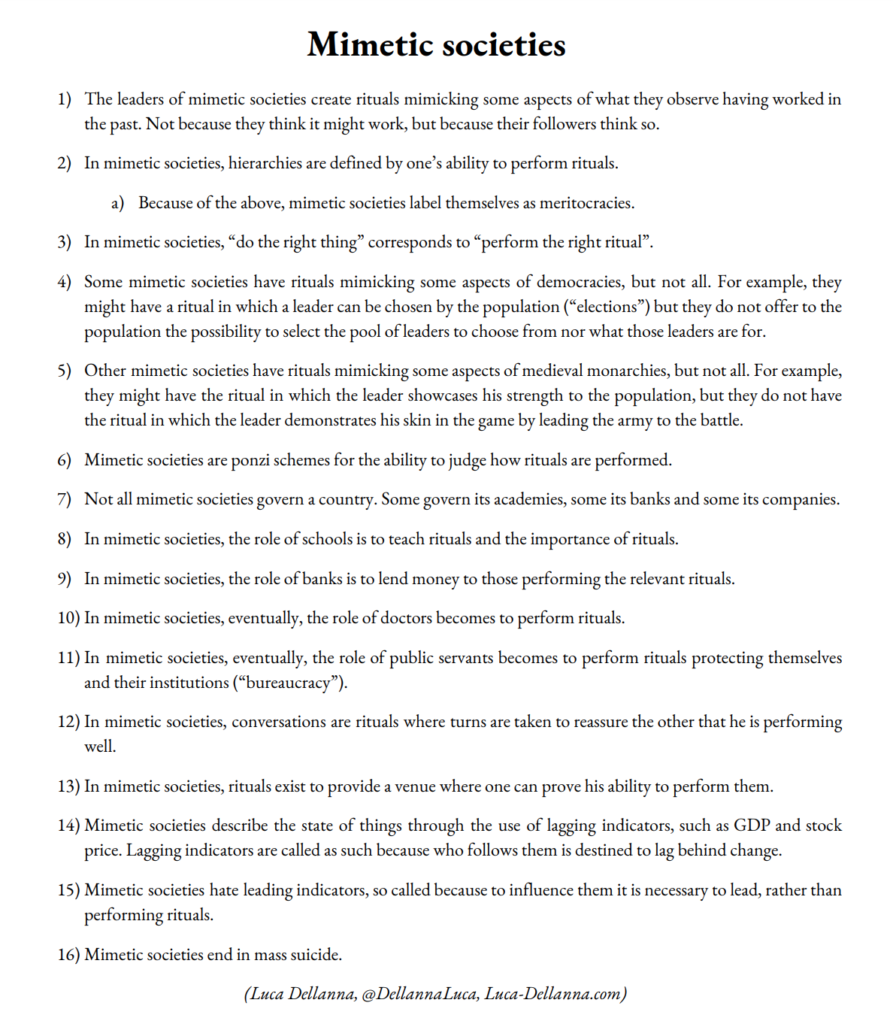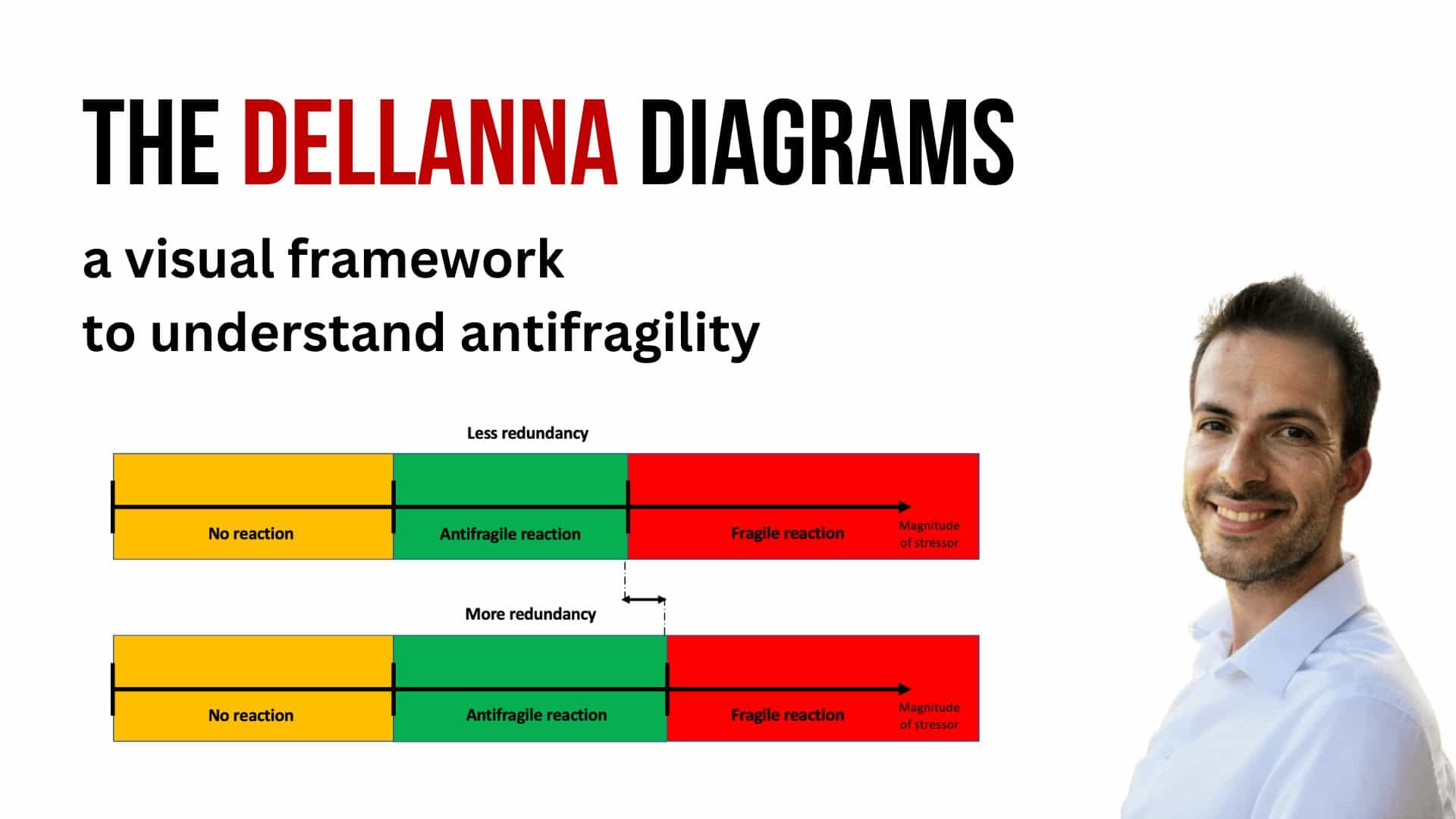Growth obtained through short-term tactics eventually plateaus. It’s a dead end.
- The leaders of mimetic societies create rituals mimicking some aspects of what they observe having worked in the past. Not because they think it might work, but because their followers think so.
- In mimetic societies, hierarchies are defined by one’s ability to perform rituals.
- Because of the above, mimetic societies label themselves as meritocracies.
- In mimetic societies, “do the right thing” corresponds to “perform the right ritual”.
- Some mimetic societies have rituals mimicking some aspects of democracies, but not all. For example, they might have a ritual in which a leader can be chosen by the population (“elections”) but they do not offer to the population the possibility to select the pool of leaders to choose from nor what those leaders are for.
- Other mimetic societies have rituals mimicking some aspects of medieval monarchies, but not all. For example, they might have the ritual in which the leader showcases his strength to the population, but they do not have the ritual in which the leader demonstrates his skin in the game by leading the army to the battle.
- Mimetic societies are ponzi schemes for the ability to judge how rituals are performed.
- Not all mimetic societies govern a country. Some govern its academies, some its banks and some its companies.
- In mimetic societies, the role of schools is to teach rituals and the importance of rituals.
- In mimetic societies, the role of banks is to lend money to those performing the relevant rituals.
- In mimetic societies, eventually, the role of doctors becomes to perform rituals.
- In mimetic societies, eventually, the role of public servants becomes to perform rituals protecting themselves and their institutions (“bureaucracy”).
- In mimetic societies, conversations are rituals where turns are taken to reassure the other that he is performing well.
- In mimetic societies, rituals exist to provide a venue where one can prove his ability to perform them.
- Mimetic societies describe the state of things through the use of lagging indicators, such as GDP and stock price. Lagging indicators are called as such because who follows them is destined to lag behind change.
- Mimetic societies hate leading indicators, so called because to influence them it is necessary to lead, rather than performing rituals.
- Mimetic societies end in mass suicide.
(note: this list later became part of my book, “The Control Heuristic”)




